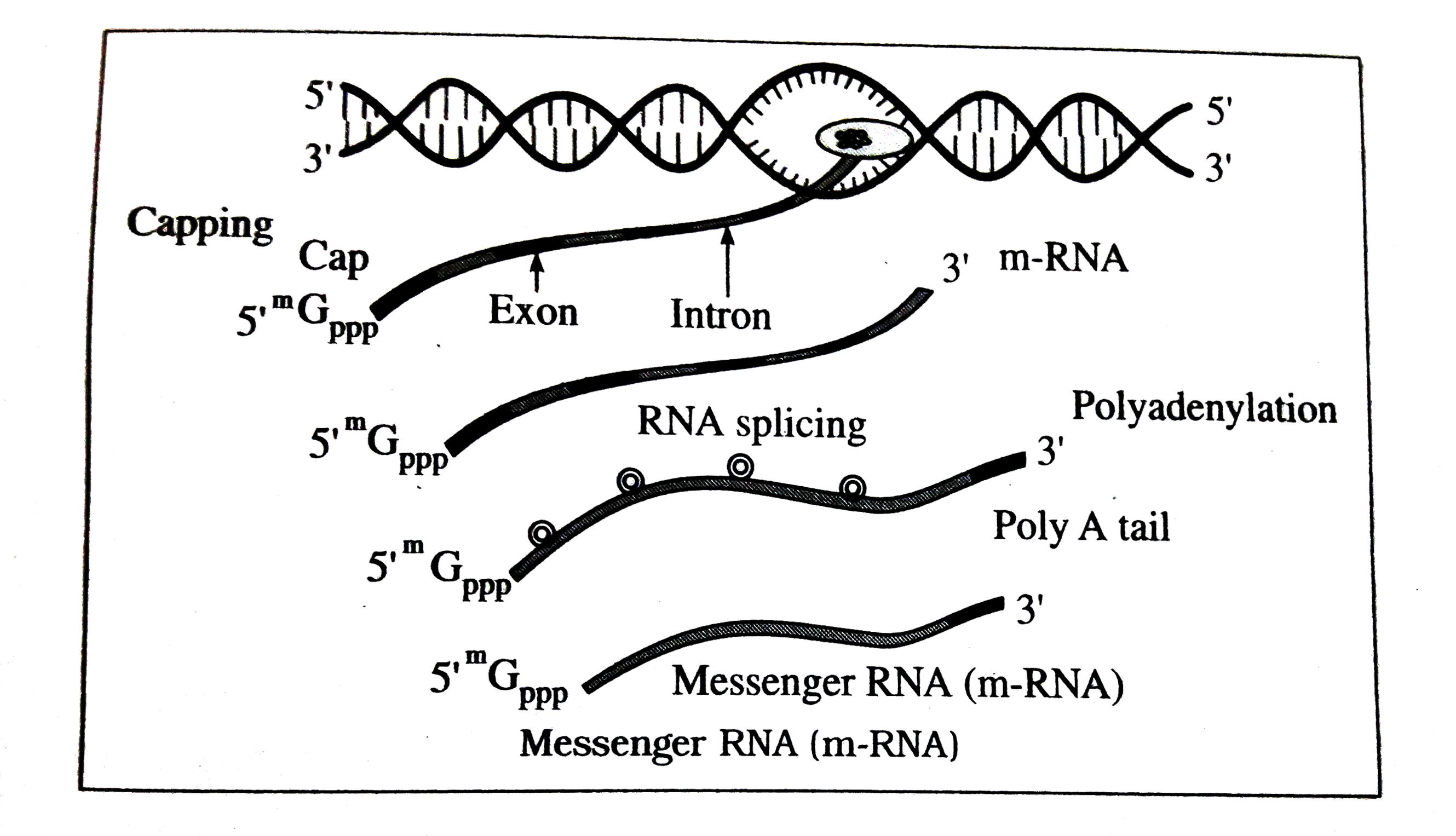Describe the process of transcription in protein synthesis.
(1) Transcription is the process in which all the types of RNA molecules are formed. It is the frist step in the protein synthesis . In this, m -RNA strand is formed from DNA template.
(2) Initiating the process of transcription required the presence of an enzyme called DNA dependent RNA polymerase. Gentic information from DNA is copied into m-RNA during the step,
(3) A transcription unit has a promoter, the structural gene and a terminator. This transcripiton unit helps in the transcription process. The DNA strand which is used for the synthesis of RNA is called template strand or antisence strand. This is oriented in direction . The other strand which is no involved in RNA synthesis is called coding strand or sense strand . Ths strand has the orientation . A small DNA sequence is used as a binding site for RNA polymerase. this region is called promoter. Promoter is present towards 5 end. Towards the 3' end there is another small DNA sequence called terminator. 5' end is called upstream while the 3' end is called downstream.
(4) structural gene is generally monocistronic in eukaryotes and polycistronic in prokaryotes. This gene gets transcribed. In eukaryotes. the genes have introns and exons. In the exons, DNA sequences are expressed in the mature or processed RNA. During transcription , the enzyme RNA polymerase binds to the promoter site. it initiates the process . Due to this two strands of DNA separate . Complementary RNA nucleotides are joined to form the m-RNA strand. This process is called elongation .
(5) A small part of RNA remains attached to the enzyme RNA polymerase. This part reaches the terminator region and then both enzyme and newly synthesized m-RNA fall off. This is called termination of the transcription.

(6) For the process of transcription. initiation fator ( sigma) and temination factor ( rho) are essential . In prokaryotes further processing of RNA does not not take place but in eukaryotes , there is an elaborate process of RNA processing . There are three types of RNA polymerase enzymes for this purpoe. These are RNA polymerase I , II and III.
(7) (i) r-RNA is formed is formed by RNA polymerase I. (ii) hn-RNA (het- eroncuclear RNA) is formed by RNA polymerase II and (iii) t-RNA and sn-RNA (small nuclear) are formed by RNA polymerase III.
(8) The RNA formed by transcriptioon is non functional in eukaryotes. It undergoes further processing for becoming active. This process consists of splicing , capping and tailing
(9) Such hn-RNA which undergoes splicing , capping and tailing now becomes m-RNA. In eukaryotic cells the m-RNA molecular leaves nucleus and goes to ribosomes to carry out the further process of protein synthesis.
Topper's Solved these Questions
- LONG ANSWER QUESTIONSBOOK - NAVNEET PUBLICATION - MAHARASHTRA BOARDCHAPTER - LONG ANSWER QUESTIONSEXERCISE - Photosynthesis
15 Videos
- LONG ANSWER QUESTIONSBOOK - NAVNEET PUBLICATION - MAHARASHTRA BOARDCHAPTER - LONG ANSWER QUESTIONSEXERCISE - Respiration
4 Videos
- LONG ANSWER QUESTIONSBOOK - NAVNEET PUBLICATION - MAHARASHTRA BOARDCHAPTER - LONG ANSWER QUESTIONSEXERCISE - Additional Important Questions for Self-practice
1 Videos
- GIVE REASONS BOOK - NAVNEET PUBLICATION - MAHARASHTRA BOARDCHAPTER - GIVE REASONS EXERCISE - Organisms and Environment - II
2 Videos
- MATCH THE COLUMNS/MATCH THE PAIRS/COMPLETE THE TABLEBOOK - NAVNEET PUBLICATION - MAHARASHTRA BOARDCHAPTER - MATCH THE COLUMNS/MATCH THE PAIRS/COMPLETE THE TABLEEXERCISE - Chapter 19 : Organisms and Environment - II
3 Videos
Similar Questions
Describe the process of transcription in a bacterium.
View SolutionDescribe the process of transcription in a bacterium.
View SolutionDescribe the process of digestion of protein in stomach.
View SolutionDescribe the process of digestion of protein in stomach.
View Solution(a) Describe the process of transcription in bacteria.
(b) Explain the processing the hnRNA needs to undergo before becoming functional mRNA in eukaryotes.
View Solution(a) Describe the process of transcription in bacteria.
(b) Explain the processing the hnRNA needs to undergo before becoming functional mRNA in eukaryotes.
View Solution(a) Describe the process of transcription in bacteria.
(b) Explain the processing the hnRNA needs to undergo before becoming functional mRNA in eukaryotes.
View SolutionDescribe the initiation process of transcription in Bacteria.
View SolutionDescribe the initiation process of transcription in Bacteria.
View SolutionDescribe the initiation process of transcription in bacteria.
View Solution
